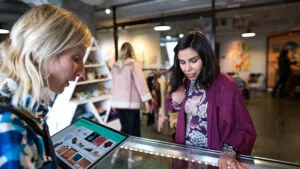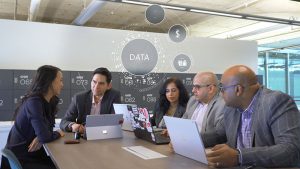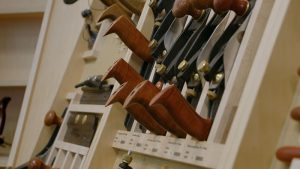
Best of NRF 2016: Unified Commerce steals the show
Earlier this month, the retail and technology industries merged together again for the National Retail Federation’s annual convention and tech expo.
With technology advancing so quickly, the opportunities for retailers to do things they’ve never been able to do before is tremendous, and so all eyes were on Retail’s BIG Show as the pulse of where the industry is heading in 2016 and beyond. We asked our Microsoft NRF retail team to share their perspective from the expo hall floor, and from the looks of it retailers this year were focused on the practical.
Less sparkle, more practical
“There were a lot less ‘sparkly things’ stealing the limelight this year,” according to Duncan Taylor, Microsoft’s director of retail & commerce industry solutions. “Sure, there’s always the cool things to grab attention, but I think retailers are seeing through that and are wanting to see things that can change their business today. They wanted good practical conversations that help them solve their problems.”
So what were some of those less sparkly and more practical things of interest?
Customer engagement was at the heart of everything
Our team consistently saw customer engagement-related solutions take priority. “Retailers are needing new, innovative ways to keep their customers and make them feel special,” Taylor continued. “They are looking to use tools to help them communicate better with more relevant things, and the data that drives it.”
Tapping into data to drive meaningful customer interactions was high on the list. “A lot of the talk this year was about how can I leverage data to create a more personal interaction with the shopper,” shared Brendan O’Meara, senior director of Microsoft’s Worldwide Retail and Consumer Goods team. “It seems these days, that one-size fits all just doesn’t work anymore.”
Analytics and customer engagement: it’s all about the context
And when it comes to using data to engage shoppers in more personal and meaningful ways, it appeared the conversation has gotten very specific—not just how to use it, but where and when and in what context.
“To me, in-store analytics and engagement was a standout,” said ShiSh Shridhar, Microsoft’s global industry director of retail solutions, and a long-standing retail BI expert and trendspotter, who spent the show talking with retailers about this very topic and observing what tech vendors were showcasing. “I saw various implementations across vendors both inside our booth and the expo floor, and many of these pivoted to mobile scenarios, another big standout for me.”
Perhaps the biggest reason for the in-store and mobility focus?
“Consumers are so used to the service that they get from online retailers who really understand what they’re shopping for,” said O’Meara. “Newly affordable technologies like beacons and other sensing technologies, and the power of their data, are bringing that same level of service into the in-store shopping experience. This new understanding is enabling retailers to take the experience inside the store, and even outside when they’re mobile, to completely new realms.”
Unified Commerce trended to the top
To drive this consistent, personalized experience across the shopping journey, it seems it all boils down to unified commerce, a step beyond omni-channel in which shoppers no longer have to choose between the rich selection of online shopping and the service and attention of an in-store experience.
Taylor said that unified commerce was definitely top of mind, and he heard many frustrated retailers struggling to achieve even simple things through their existing technology systems, due to the lack of unified commerce.
This industry priority was validated by retail’s leading experts. In new research released at NRF, Greg Buzek, president of global research firm IHL Group, shared that 69 percent of worldwide software spending in 2016 will be centered on unified commerce-related tech initiatives, representing an astounding $30 billion USD.
Surprise takeaways: virtual reality and IoT
So while the industry’s emphasis this year was on the practical, it still wasn’t completely immune to the buzzwords and the bling. If there was one “sparkly thing” that our team wasn’t expecting to be as popular as it was, at least not quite yet, it was virtual reality initiatives, considering its current cost and hardware constraints.
Oh, and what about the Internet of Things and the predictions that it would rule this year’s show?
“IoT was certainly easy to find on the show floor, but many of the scenarios were not necessarily labeled as IoT,” shared Shridhar, who’s also our retail Internet of Things guru. “I’d say that’s a positive, and an indication that retailers were pursuing solutions that were a priority for them rather than following the buzzwords. My opinion was that the IoT solutions were truly aligned with retailer priorities and not unrealistic, cost-prohibitive solutions. They aligned with retailers’ desire to become customer-centric and drive better operational efficiency.”
So there you have it, back to the practical and customer-centricity!
So what do you think? What other highlights stood out for you? We’d love to hear about them over on Twitter.
And if you missed Microsoft and our partners at the show, you can read more about our activities and check out our NRF and customer videos.
We’ll see you next year!







